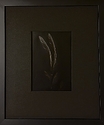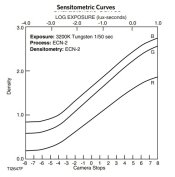Robert Canis
Member
In Large format we have the opportunity to make a custom development for each individual sheet, or we simply group those shots requiring (say) N-1.
We have techniques that are valid for rolls, for example diafine developer is a highly compensating way, or stand...
Also, depending on our particular subject (sunny vs cloudy, kind of scenes in the roll ) we may use something not standard. I've a proficient friend that shot (for 2 decades) TMY ay EI 200 developed N-1, now he shots TMX at box speed developed normally, but he presently shots different subjects...
____________________________
Regarding Split Grade, this is mostly the same than non Split grade. An Split Grade printing ends in the same than using a particular grade. At the end after exposing with (say) Grade 2 we also burn highlights with 00 and shadows with 5... Split grade has a single (usually minor) advantage compared to regular: we can dodge some areas in the 00 exposure or in the 5 exposure. After using a particular grade we can allso burn different areas with different grades, but dodging 00 or 5 can only be done in Split.
For the basic adjustment of a print (before image manipulation activity) we vary Exposure and Contrast. In Split Grade we (usually) adjust that in a different way, we adjust the Yellow (green+red) exposure for the highlights and the Purple (blue+red) for the shadows. With regular printing we usually adjust exposure for the highlight and later we adjust grade for the shadows. At the end it's the same, done in different ways. Split Grade provides no miracle, just another workflow, with the minor advantage of a more selective dodging, if we master that.
For myself, I use Rodinal 1:50 but the time and agitation I employ for N development enables me to obtain in excess of the usual 5 stops. Indeed, I would say I get closer to 7 resulting in a negative exhibiting good contrast and minimal grain. The scene has to be pushing beyond this for me to do N-1.
shoot HP5 at box speed












